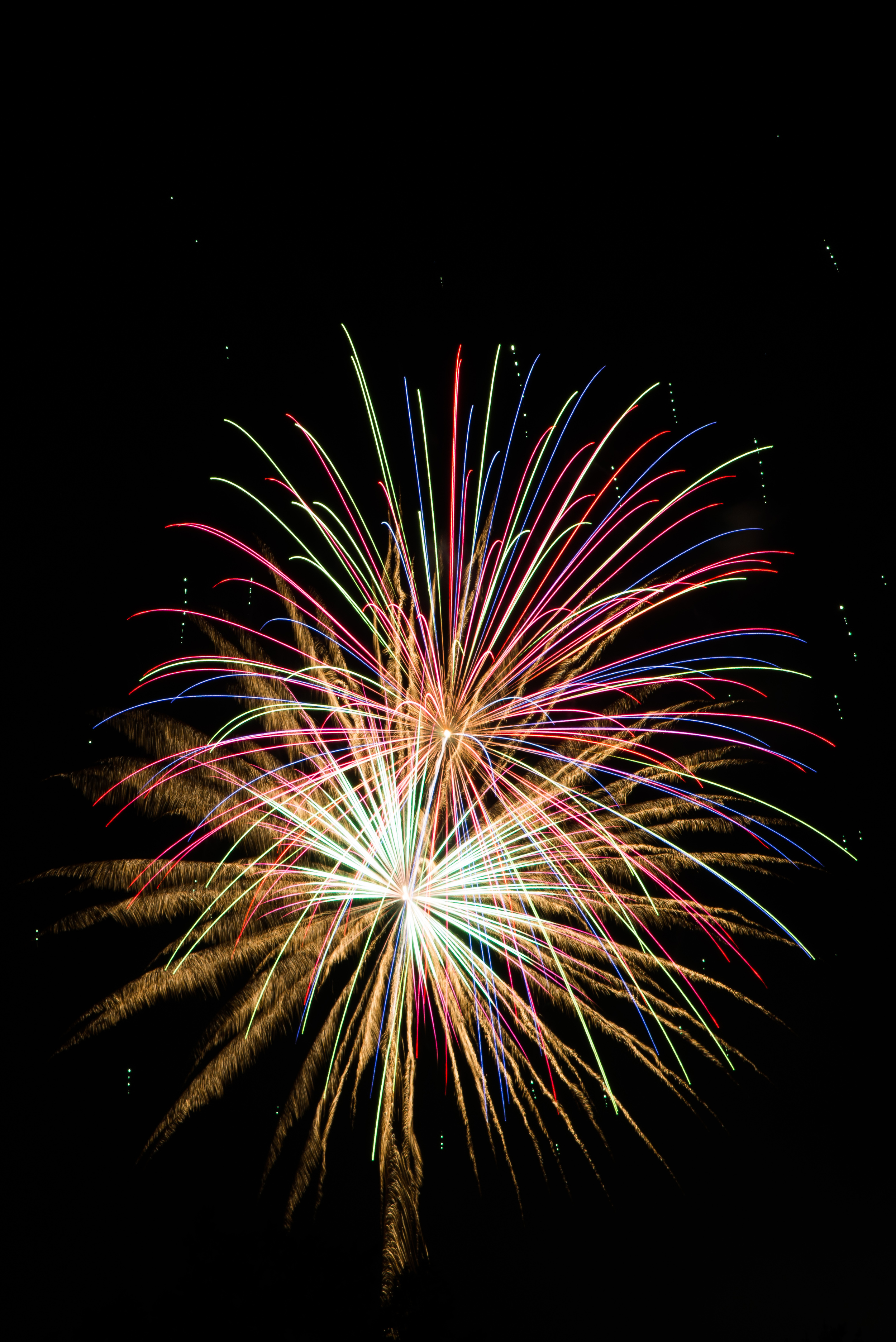This Independence Day my wife and I took a brief trip to New York City for a different view of fireworks. The Fourth of July is her favorite holiday so we try to do something special. This year we took an evening dinner cruise into New York Harbor to watch the festivities. For a photographer this poses a few interesting problems, the main ones being light, and speed. Taking a fireworks picture usually means putting the camera on a tripod and leaving the shutter open for a few seconds (4-20, I usually average about 7) while the explosive soars into the sky and erupts with glorious showers of light and color. Leaving the shutter open for this long captures the entire trajectory of the display. Being on a moving boat made this quite impossible. Seven seconds of picture while floating and turning would create a blurry smudge of color where the firework should have been and streaks of lines from the buildings on Manhattan and the other ships in the water.
My plan was to shoot with as quick a shutter speed as I could while letting a lot of light in quickly with a not too high ISO. The Nikon D4 is a great camera for speed and produces clean images at very high ISO settings, but noise in a black sky would be easily perceptible so decided to go with the fastest glass I had with me. My final setup was using the Sigma 35mm f/1.4 and the D4. Depth of field wasn’t much of a concern since the action was taking place quite a ways away, and was reasonably centered around one focus point. I’m pretty happy with the result.
Nikon D4 Sigma 35mm f/1.4 @ 35mm f/1.8 ISO 2000 1/160 sec
Nikon D4 Tokina 16-28mm f/2.8 @ 25mm f/2.8 ISO 2000 1/50 sec



























